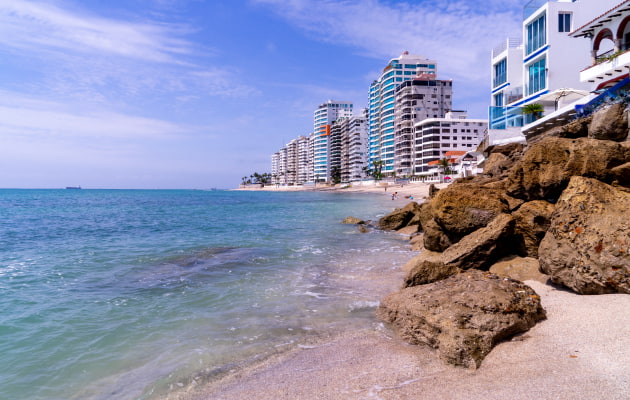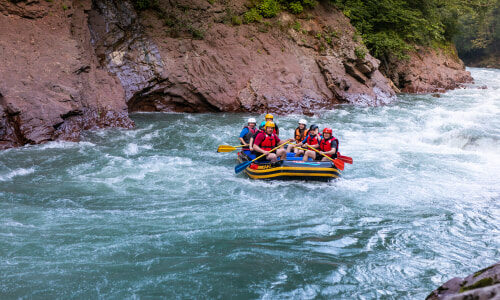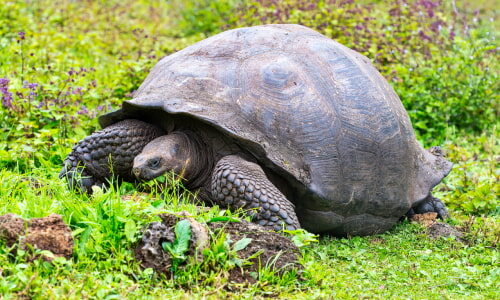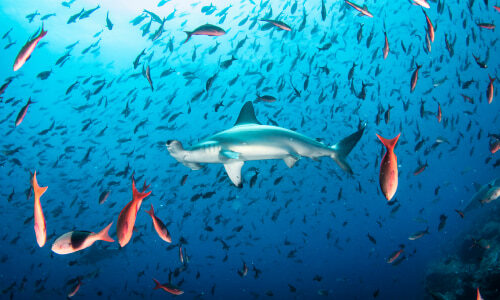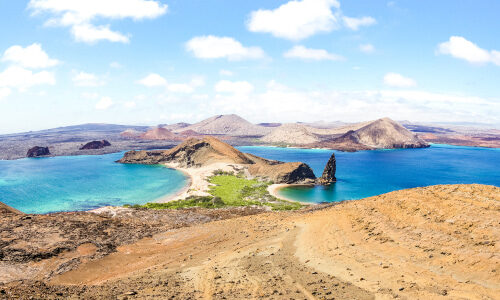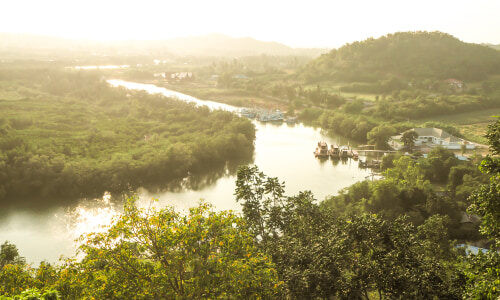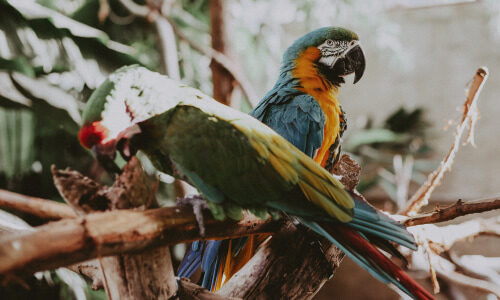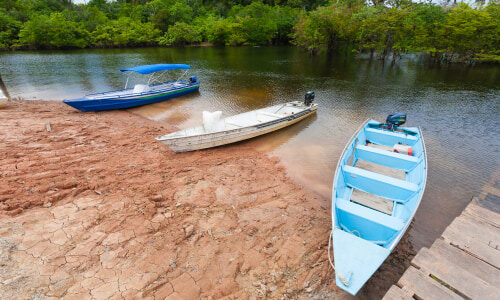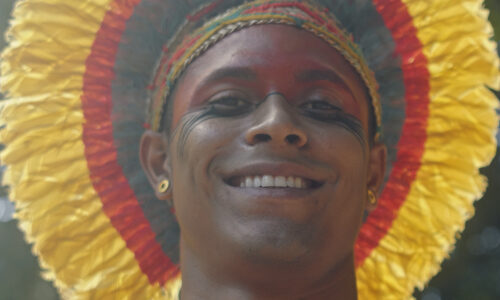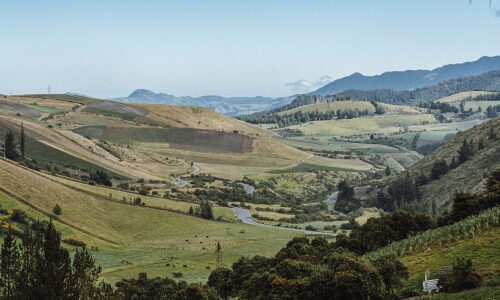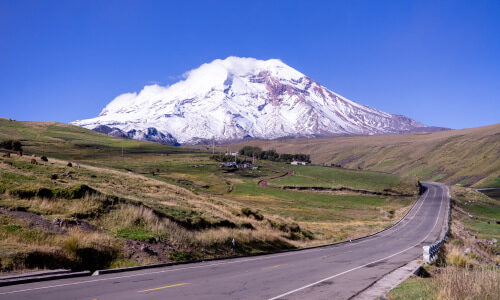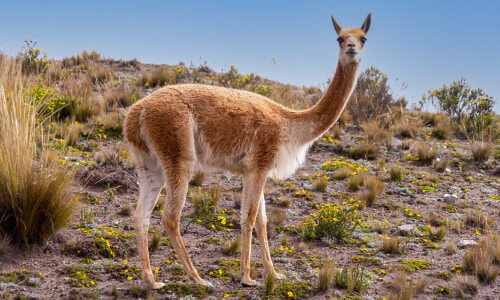Beaches in Ecuador
Many people who think of Ecuador, instantly think of the beach. With the Amazon Rainforest and the Andes, Ecuador has a lot more nature than just the coast and the Galapagos. Nevertheless, Ecuador does indeed have an abundance of beaches.
Ecuador’s mainland has a coastline at the Pacific of over 600 miles known as the ‘Costa’. On top of that, the Galapagos Islands, 850 miles out from the coast into the Pacific Ocean, have plenty of impressive beaches as well. All these beaches are right around the equator line, bringing great weather, fantastic nature and impressive marine life.
Types of Beaches in Ecuador and the Galapagos Islands
With so many beaches and summery weather year-round, Ecuador has a great variety of types of beaches you can visit during your vacation.
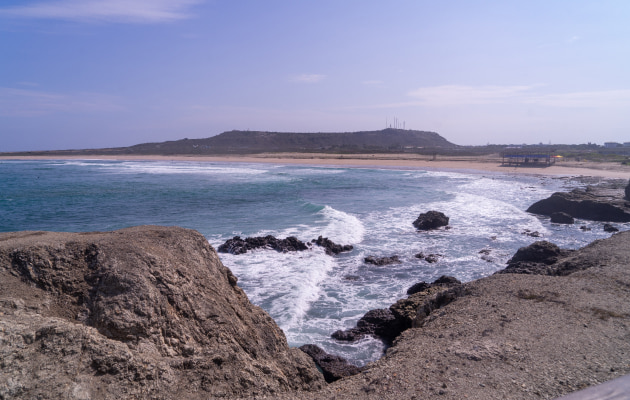
Beaches in Ecuadorian National Parks
Ecuador is keen on protecting and maintaining its extraordinary nature. Therefore, this South-American country has 11 national parks. 2 of these national parks include beaches, namely the Galapagos Islands and Machalilla.
These coastal national parks are calm, authentic, natural and full of wildlife. These parks are more than just a beach. If you go here, you can combine snorkeling, swimming, sunbathing, scuba diving, canoeing with hikes in the surrounding coastal nature. Don’t expect large crowds and commerce here, it’s just you, the beach, the marine life and the coastal nature.
Both in the Machalilla National park and on the Galapagos Islands, you will encounter marine life such as whales, dolphins, rays and sea turtles. In the Galapagos, you will also encounter sharks, iguanas and sealions. While in Machalilla, you can encounter monkeys in the surrounding woods. Both national parks are great for bird watching too.
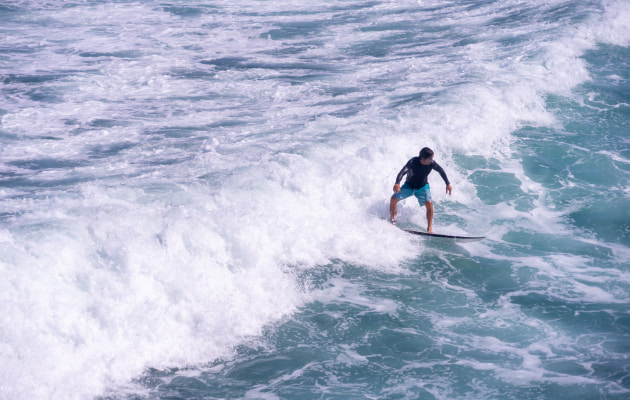
Along the coastline and at the Galapagos Islands, there is an abundance of surf possibilities in Ecuador. You can surf in calm fishermen towns, at places full of bars or you can find areas where you share the waves with Sea Lions and Iguanas.
In Ecuador, you can surf year-round. However, the peak of surfing in Ecuador is during the wet season at the southern coastline and the Galapagos Islands. Which is from November until May. During this time of the year, clear blue skies and brief intense rain interchange, the temperatures are around 30 degrees Celsius (86 F) and the swells are high.
There are surf possibilities for all levels of experience. Also, there are several places where you can rent equipment or even take lessons.
Ecuadorian beach towns & resorts
Along the Ecuadorian coastline runs a highway from north to south. This pacific highway is famous among Ecuadorians. Many tourists, both Ecuadorian and foreign, like to drive along the full coastline to hop from one coastal town to another. All towns have their own authentic charms and characteristics, varying from coastal cities to quiet fishermen’s towns and from backpackers’ surf and party towns to family resorts.
In Same, you’ll find the Casa Blanca. This is a closed resort with multiple hotels, private holiday apartments and Airbnbs. Casa Blanca is not so famous among foreign travelers, but it’s perfect if you travel with young children. Further south, you’ll find Manta. Manta is the largest city at the Ecuadorian coast with over 200.000 inhabitants. Next, you’ll get to Montañita. Montañita is known as the party town at the beach, full of backpackers and surfers. Further south is Puerto Lopez, which attracts nature lovers who want to see whales, blue footed boobies and like to go scuba diving with sea turtles. Now, we have even skipped the many charming fishermen’s towns, such as Ayampe and Olon.
Overview of best beaches in Ecuador
There are simply too many beaches in Ecuador to describe all in detail. However, we have made a selection of the ones we consider to be the best beaches of Ecuador.
Tortuga Bay
Imagine a white sand beach at a remote calm tropical island, surrounded by warm clear blue water. Imagine a small paradisiacal beach somewhere deep into the Pacific Ocean. You’re thinking of Tortuga Bay.
Just like almost everything at the Galapagos Islands, Tortuga Bay is one of a kind. You’ll be a guest at a wildlife beach. As the name suggests, this beach is the home of the Tortuga (sea turtle), but that’s not the only wildlife you’ll encounter. Tortuga Bay is full of Iguanas, birds, sea lions and a lot more. And since you’re visiting their beach, they will not move out of your way.
A couple of tours take you to Tortuga Bay. However, from Santa Cruz it’s only a 45 minutes’ walk. In fact, the walk over a path surrounded by lush trees is rather enjoyable. If you have the chance, you should go early in the morning on a weekday. You’ll have a quiet beach with warm waters for yourself.
Machalilla National Park, Manabi
Machalilla is one of Ecuador’s true natural pearls. There are white sand beaches surrounded by rocky and green wilderness. Machalilla is perfect to combine a relaxing day at the beach with a hike in the national park.
Bring a book, comfortable shoes, your own water bottles and lots of sunscreen. Make sure you’ll enter the park well prepared. You’ll find no hotels, no restaurant, no hostels or any kind of commercial activity within the national park.
Isla Portete y Júpiter, Esmeraldas
As the name suggests: Isla Portete is an island. This is the perfect place to wind down, relax and enjoy the natural surroundings at a calm beach. If you’re looking for a remote beach with palm trees at a tropical island which is not over commercialized. This is your place!
Isla Portete is just off the coast of the laidback fisherman’s town of Mompiche, which is popular with backpackers and surfers. Mompiche is about 6h30 hours from Quito by car. From Bolivar, just outside Mompiche, little boats take you to the Island.
Ayampe, Manabí
If you’re looking for a good spot to surf while mingling with the locals, Ayampe is your place to go. It’s known for its waves, yoga and fresh seafood. Everything on the menu is the ‘catch of the day’, you’re not going to find your fish fresher than here. Ayampe is a cozy calm fishermen’s town.
In Ayampe, cultural preservation and community tourism are keys to the experience. The (foreigner) surfers and yoga lovers mingle with the locals. This town is a vibrant yet relaxed destination. If you visit Ayampe, you’ll make lots of friends from all ages and backgrounds.
Montañita, Santa Elena
Surf, sun, beach and party. That’s what Montañita is all about.
Montañita has a fast-paced party vibe, making it a world’s renowned destination for backpackers and dubbed by travelers as “Ecuador´s Ibiza”. If you visit Montañita, you will have plenty of options when it comes to restaurants, nightlife and places to stay. You will find shoestring budget hostels, enjoyable boutique hotels, Spa-resorts and surf and yoga retreats in this town.
Best time to travel to the beach in Ecuador
As Ecuador is situated right at the equator, it does not have a winter. The weather at the beach is good year-round. However, it’s not as hot as in the Caribbean and the Mediterranean at their peaks, because of the cooling effects of the Pacific Ocean. Through the year, along the costa (Ecuador’s pacific coastline) and the Galapagos Islands, air temperatures vary between 22 and 32 degrees Celsius (72 – 90 F) and sea temperatures between 23 and 28 C (74 – 82 F).
The beaches in the northern half of the costa, so those north of the equator, have a stable climate year-round with temperatures around 30 degrees Celsius (85 F). While at the beaches south of the equator as well as at the Galapagos Islands, there is a difference between the wet and the dry season.

Wet Season at the Beach in Ecuador
Many tourists are misled by the name ‘wet season’. It’s actually the sunbathing and surfing high season. Ecuadorians often call the ‘wet season’ the ‘beach season’, because the sea and the weather is so enjoyable at this time of the year.
Most of the day, the sky is clear blue, the sun is strong, maximum temperatures reach above 30 degrees Celsius (85 F) and the waves in the surfing areas are at their highest. Now and then, there are brief cooling showers, hence ‘wet season’.
The coastal wet season lasts from November until May.
Dry Season at the Beach in Ecuador
During the dry season, at the southern coastal beaches as well as at the Galapagos Islands, temperatures are a bit lower. During the day, it’s around 24 degrees Celsius (75 F) and the sky is covered with a thin layer of clouds. The northern coastal beaches are different. Here, temperatures are around 30 degrees (85 F).
The sea is calmer and more stable. Surfing is still possible. However, if you are an experienced surfer and you have surfing at the top of your bucket list, the wet season is better. But if you want to spot marine life it’s a different story. The calmer waters are clearer and therefore better for scuba diving and snorkeling. Also, during this period whales come with their young to shallow waters around Puerto Lopez and to the Galapagos Islands. You will find plenty of whale watching tours.
The coastal wet season lasts from June until October.
Galapagos activities
The Galapagos Islands consist of over 120 islands, islets and rocks. Of course, not all of them have tourist accommodation or are even inhabited…
Amazon activities
The Amazon rainforest has an abundance of flora and fauna, local indigenous communities have kept their authentic cultures and this rainforest is full of great activities…
Andes activities
Ecuador is situated right at the equator. This brings a lot of sunlight and heat and has a major impact on the country’s nature. The Andes is characterized by high altitudes…
